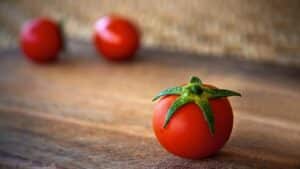Biodiversity has been simmering on the societal and political agenda for a while but came back with a blow in April. The Biodiversity Strategy under the EU-Commission’s Green Deal starts with alarmist statements and is followed by tens of billions of investments for the coming years. In the Netherlands, badly needed house construction has come to a grinding halt due to limits to nitrogen deposition in nature areas affecting biodiversity.
As plant breeders for whom diversity is a necessity, we are the last ones to say that biodiversity is irrelevant. But our narrative on the issue has been quite limited. That we contribute to genebanks and support projects in centres of crop diversity doesn’t ‘stick’ in critical debates or in public discussions about our sector.
Why are we the bad guys?
The first challenge that we face is that of the three main system levels of biodiversity: landscape, species and genetic diversity, the latter is the least ‘sexy’. Everybody sees landscapes change with urbanisation, construction of infrastructure and an increasing scale of agriculture. The decline of, especially cuddly, species like panda and koala helps to highlight the decline of species diversity. That even reduction of insect numbers, which are commonly perceived as nauseating, currently triggers political uproar, is indicative that public perception of this kind of biodiversity is increasing. We, however, operate at the lowest system level, genetic diversity, which is much less visible.
The second reason is that plant breeding has for long operated at the wrong end of biodiversity. Breeding has initially replaced many genetically diverse farmers’ varieties in Europe between 1850 and 1950, reducing diversity at the field level [ref 1]. Uniformity was both a logical outcome of increasingly effective selection, and as a breeding goal going hand in hand with the mechanisation trends in farming during that same period. At the global scale, the Green Revolution has replaced vast amounts of diversity from the 1960s onwards. International cooperation in breeding, either by the international agricultural research centres, or by internationally operating companies, has spread single uniform varieties over large production areas, at least initially. That this loss of diversity in the field was recognised by breeders, and triggered the establishment of many genebanks, does not prevent breeding to be a cause of the loss of crop genetic diversity.
Trends reverse
We can however confidently say that in Europe, breeding is currently contributing to diversity. An increasing body of scientific publications based on genomic analysis show that the genetic diversity among varieties is increasing [ref 2]. These studies mention two main drivers: a) breeding methods and b) market.
- Marker assisted breeding has allowed breeders to use more distant materials in breeding, thus introgressing a broader array of diversity into elite germplasm. Perhaps also more efficient selection methods in mutation breeding may have helped [ref 3].
- In vegetables, a claim is that market demands have broadened the genetic diversity. That is most obvious in tomato, where a current diversity of shapes, tastes and colours have replaced standard types of tomato in the 1980s [ref 4].
Will this message convince society? Our experience is that the diversity of consumer traits in tomato does convince a lot of people of the importance of breeding. Whether it will also be persuasive in the biodiversity debate remains to be seen. Protected cultivation of tomatoes is not commonly part of the ‘picture’ that society has when speaking of biodiversity, and genetic diversity among wheat varieties is not very convincing for people who have problems identifying wheat and barley. But in discussions with politicians, … it may help. The next logical question we can expect is: ‘what could you do more?’. We have to see when diversity within a variety could be functional, and then how the uniformity requirements (for farmers, processors and consumers) could be matched with diversity in the field. Could gene editing support the combination of diversity and uniformity?
Finally, we can also contribute at the species level. Plant breeding is essential to increase the number of crops in European farming systems. The political outcry for more diversity in agricultural landscapes, for more homegrown proteins in the European Union, and for more catch crops, supporting sustainable land use, require breeders to make such species competitive in our farming systems.
We have however some important requirement to formulate good messages: of course, we can only invest in breeding when our breeder’s rights are effectively protected; we can contribute quicker when the full toolbox of the breeder is available to all breeders, including gene editing and cis-genesis, and as a bottom line message we need to say clearly that: only when we have access to diversity, we can contribute to more diversity!
- Louwaars, N.P., 2018. Plant Breeding and diversity a troubled relationship? Euphytica 214:114. https//doi.org/10.1007/s10681-018-2192-5.
- Le Buanec B, 2018, La diversité génétique en agriculture. In: Reignault-Roger C (Dir.): Idées reçues en agriculture, parole à la science. Académie d’Agriculture de France. Presses des Mines editor, pp 169-186.
- vdWouw: Van der Wouw MJ, Van Hintum TJL, Kik C, Van Treuren R, Visser L, 2010. Genetic diversity trends in twentieth century crop cultivars: a meta analysis. Theoretical and Applied Genetics 120(6): 1241-1252
- Schouten HJ, Tikunov Y, Verkerke W, Finkers R, Bovy A, Bai Y, Visser RGF, 2019. Breeding has increased the diversity of cultivated tomato in The Netherlands. Frontiers in Plant Science v10.











